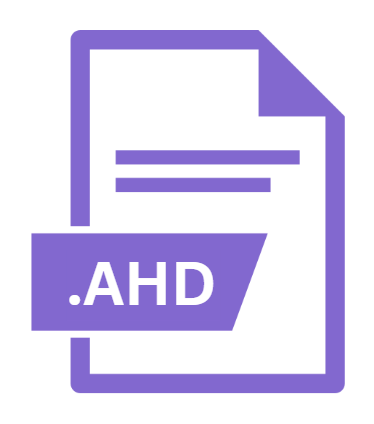.AHD File Extension

Dynamics AX Online Help Data File
| Developer | Microsoft |
| Popularity | |
| Category | Misc Files |
| Format | .AHD |
| Cross Platform | Update Soon |
What is an AHD file?
The .AHD file extension is associated with Microsoft Dynamics AX, an enterprise resource planning (ERP) solution designed for larger businesses and organizations.
Specifically, .AHD files are utilized as Online Help Data Files within the Dynamics AX ecosystem. These files store help content that assists users in navigating the features and functionalities of Dynamics AX, offering an integrated help system directly within the application.
Dynamics AX, now known as Microsoft Dynamics 365 Finance and Operations, is a robust ERP solution that integrates various business functions such as finance, supply chain management, and human resources into a single system.
The .AHD files are part of the documentation system that provides users with context-sensitive help and information about the software’s modules and features.
More Information.
The initial purpose of .AHD files was to support the extensive help and documentation needs of users working with Dynamics AX.
As ERP systems like Dynamics AX became increasingly complex, the need for a robust and accessible help system became apparent.
The .AHD files were developed to provide detailed, structured information about the software’s features, functionalities, and best practices.
Historically, Dynamics AX has undergone several major updates and iterations. With each new version, the documentation and help system, including .AHD files, were updated to reflect changes and improvements in the software.
This iterative process ensured that users always had up-to-date information and guidance at their fingertips.
Origin Of This File.
The .AHD file extension is native to the Microsoft Dynamics AX software suite. Dynamics AX, which started as a product of the Danish company Axapta, was acquired by Microsoft in 2002 and rebranded as Microsoft Dynamics AX.
Over the years, it evolved into a comprehensive ERP solution known for its extensive functionality and customization capabilities.
The .AHD file format emerged as part of the online help system designed to enhance user experience by offering searchable and context-specific help.
This format plays a crucial role in ensuring that users have immediate access to relevant information and support while using Dynamics AX.
File Structure Technical Specification.
The .AHD file structure is designed to store help content in a format that is both efficient and accessible. These files typically contain:
- XML-Based Content: .AHD files often use XML (eXtensible Markup Language) to organize and store help content. XML provides a structured way to represent hierarchical data, making it ideal for documenting the complex features of an ERP system.
- Index and Searchable Metadata: The .AHD file includes indexing and metadata that enable users to search for specific topics or keywords within the help system. This functionality is critical for quickly locating relevant information.
- Embedded Resources: In addition to textual information, .AHD files may contain links to embedded resources such as images, diagrams, or interactive elements that enhance the user’s understanding of the content.
The technical specification of .AHD files is closely tied to the Dynamics AX help system architecture. The files are designed to be integrated seamlessly with the Dynamics AX application, allowing for context-sensitive help and direct access to relevant information based on the user’s current activity or module.
How to Convert the File?
Converting .AHD files to other formats is generally not straightforward due to their proprietary nature and integration with the Dynamics AX system.
If you need to convert or extract information from .AHD files, you might consider the following approaches:
- Use Dynamics AX Tools: Within the Dynamics AX environment, you may be able to export or view help content in alternative formats, such as HTML or PDF, depending on the version and tools available.
- Custom Scripts: For advanced users or developers, custom scripts or tools might be created to parse and convert the XML content of .AHD files into more widely used formats.
- Contact Microsoft Support: If conversion is necessary for specific business needs, contacting Microsoft support or consulting with a Dynamics AX specialist may provide additional options or tools for handling .AHD files.
Advantages And Disadvantages.
Advantages:
- Context-Sensitive Help: .AHD files provide context-sensitive help that is directly relevant to the user’s current task, improving the efficiency of problem-solving and learning within the application.
- Structured Information: The XML-based structure of .AHD files ensures that information is well-organized and easily searchable, making it simple for users to find the help they need.
- Integration with Dynamics AX: As part of the Dynamics AX ecosystem, .AHD files are integrated seamlessly with the software, providing a cohesive user experience without the need to switch between different help systems.
Disadvantages:
- Proprietary Format: The .AHD file format is specific to Dynamics AX and is not widely used outside of this context. This proprietary nature can limit the file’s compatibility with other applications or systems.
- Complexity: The extensive and detailed nature of the help content stored in .AHD files can sometimes lead to information overload, especially for new users who may find it overwhelming to navigate through a large volume of documentation.
How to Open AHD?
Open In Windows
- Specific Software: Use the software that originally created the
.AHDfile. Check the software’s documentation for instructions on how to open or import.AHDfiles. - File Associations: Ensure that the file association is set correctly in Windows to open
.AHDfiles with the appropriate application.
Open In Linux
- Software Installation: Install the software that supports
.AHDfiles or use cross-platform tools if available. - File Conversion: Use command-line tools or scripts to convert the file to a format compatible with Linux applications.
Open In MAC
- Software Compatibility: Like Windows, use the software that created the file. If the software is not available for macOS, look for cross-platform versions or alternatives.
- Conversion Tools: If the file cannot be opened directly, use conversion tools or export data using compatible applications.











